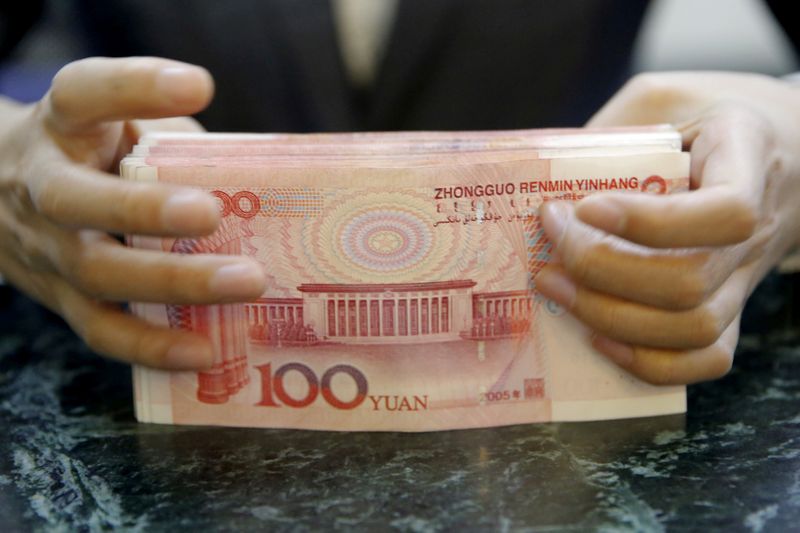SHANGHAI (Reuters) – Chinese banks have suspended the use of a tool used to influence the value of the yuan, the country’s currency trading system said on Tuesday, in a move analysts took to mean it is willing to allow some weakness in its currency.
The People’s Bank of China’s foreign exchange system issued a statement confirming a Reuters report that banks participating in a daily operation to determine the yuan’s trading mid-point have phased out use of the counter-cyclical factor, or so-called X-factor, in its formula.
Some analysts said they were not surprised at the move as the use of this X-factor – an adjustment contributor banks make to the daily trade-weighted reference rate the PBOC uses to guide the yuan – was meant to dampen depreciation pressure, and its effect has diminished recently as the yuan rallied.
The China Foreign Exchange Trade System said in a statement it would change the price adjustment model of the central parity rate of the yuan versus the dollar to promote transparency and efficiency.
“The adjusted quotation model was conducive to enhancing the transparency, benchmarking and effectiveness of midpoint quotations at contributing banks,” it said in its statement.
The offshore yuan <CNH=D3> slipped about 0.2% against the dollar to an almost two-week low of 6.7236 per dollar after Reuters reported the move.
The Chinese currency has strengthened against the dollar over recent months as foreign capital inflows have sped up and economic fundamentals have improved. The onshore yuan <CNY=CFXS> has gained more than 6% against the dollar since late May.
“Given that there is no longer any depreciation concerns, it makes sense to do away with the counter-cyclical factor (CCF), and reducing the reserve requirement ratio as they have done a couple of weeks back,” said Khoon Goh, head of Asia research at ANZ, which is not a fixing contributor.
“This does not necessarily mean that they are seeking to actively weaken the yuan – it is just that those tools are no longer needed.”
Goh added that economic fundamentals were still in favour of the Chinese currency, and yield differentials between China and other major economies should continue to attract capital inflow to support the local currency.
The central bank lowered the reserve requirement ratio for financial institutions when conducting some foreign exchange forwards trading to zero earlier this month.
China first introduced the counter-cyclical factor in 2017 in what regulators said was an effort to better reflect market supply and demand, lessen possible “herd effects” in the market and help guide the market to focus more on macroeconomic fundamentals.
It has since adjusted its methodology a number of times to cope with market conditions and keep the currency stable.
(Reporting by Winni Zhou, Samuel Shen, Jindong Zhang, Andrew Galbraith and Tom Daly; Editing by Andrew Heavens and Hugh Lawson)

























